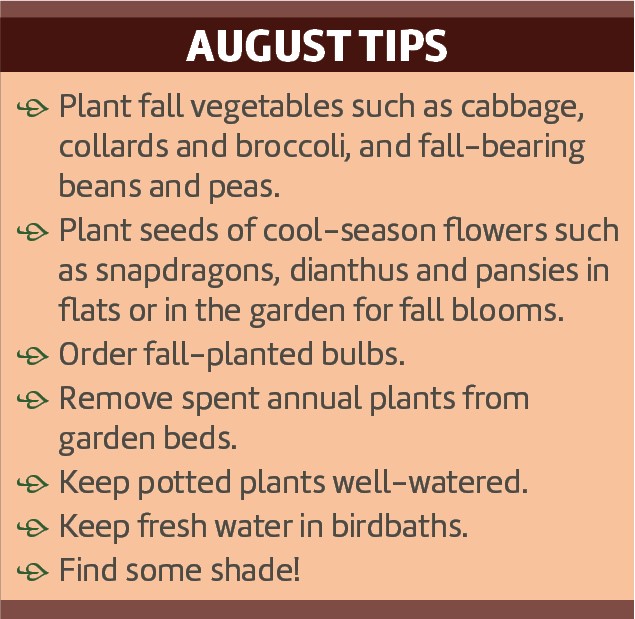This time of year, there’s nothing like spending time in a shade garden, and with the help of a few well-selected plants, any shady spot can become a garden.
The list of shade-loving plants is extensive and includes annuals (such as impatiens), perennials (think hostas and caladiums) and a variety of shrubs, vines and trees (hydrangeas, clematis and Japanese maples, for examples). But the most iconic made-for-the shade plant is one of Earth’s most ancient plants — the fern.
Ferns date back more than 350 million years when they blanketed the Earth even before dinosaurs roamed and rumbled through their fronds. In the eons since, ferns outlived dinosaurs and many other creatures and fellow plants by adapting to Earth’s ever-changing and diverse environments.
Today more than 10,000 fern species exist worldwide, some 120 of which are native to Alabama. Among those thousands of ferns are species capable of growing in some of the harshest conditions in the world — from frozen tundras to arid deserts — and in almost any location in our yards, from shade to sun. Ferns also come in a diverse array of sizes and styles, which means there’s a fern for almost every garden design need.

Ferns can be grouped for mass plantings, tucked into woodland settings, singled out as specimen plants, intermingled with other plants in garden beds or potted for use inside or outside the house. Their foliage, which ranges from soft and delicate to broad and leathery depending on the species, adds texture to a landscape. And though they don’t flower, ferns exhibit a wide range of colors in their foliage, including bright neon to dark greens and hints and hues of red, cinnamon, dun and silver.
So why don’t we have ferns everywhere? Probably because they have a reputation as finicky shade-only plants. According to Eleanor Craig, however, that reputation is undeserved.
Craig owns Fern Ridge Farms in Cherokee County, a nationally acclaimed nursery located between Centre and Cedar Bluff that produces a wide array of native and nonnative hardy garden ferns (65 different varieties at last count) along with a selection of tropical ferns and other fern companion plants.
According to Craig, ferns are not all that persnickety, especially about sun. “Most ferns actually don’t like deep, dark shade,” she says. “They prefer early morning sun or dappled sunlight. And there are ferns that love full sun.”

While they do need sufficient moisture, many do fine in drier settings as long as they have the right growing conditions (especially some of our native ferns), which can be enhanced using proper planting techniques.
“I’m a big proponent of fall planting — September through November,” Craig says. That’s because there’s usually plenty of soil moisture that time of year to give ferns a good start, and they have time to establish root systems that help them tolerate summer heat stress.
“Make sure to dig a hole that is wider rather than deeper,” Craig says, noting the fern’s crown should be above soil level so it won’t rot. “I like to mix in composted leaves or pine bark soil conditioner and add a handful of lime as I plant, too.”
Once in the ground, ferns need little more than sufficient moisture and occasional pruning to remove dead or damaged fronds, which gives plants more energy to grow new ones. They also need little to no fertilizer.
And ferns have what Craig calls “one really big plus. Deer hardly ever eat them!” Nor do many other types of wildlife and insects. Who could ask for more?
Want to find out more? Craig is happy to help. Though she enjoys speaking to groups throughout the Southeast, she’s staying safer at home these days; however, she welcomes visitors to Fern Ridge. Check out her website at fernridgefarms.com to learn more.
Katie Jackson is a freelance writer and editor based in Opelika, Alabama. Contact her at [email protected].




